
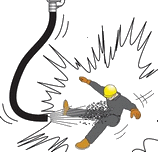
Flexible pressurized Hoses prevent Hose whipping
Flexible pressurized hoses are found on most construction and repair operations. Usually these hoses are pressurized with air but they may also contain paint, hydraulic fluids, or welding gases.
Injuries have occurred when these hoses have broken. The injury can be caused by the whipping hose itself, blowing debris, or the release of the potentially dangerous gas or liquid carried by the hose.
The sudden noise can be startling, which in turn can cause injury from a second Reference(s). For example, the startled person may jump back and fall. Let's look at ways to control the hazards of broken hoses.
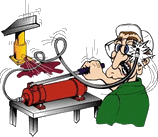
The leading cause of hose failure is probably abuse. This can be accidental or intentional. Before use, inspect the hose, looking for indications of past abuse that may weaken the hose. A torn outer jacket, damaged inner reinforcing, or soft spots would warrant removing the hose from service.
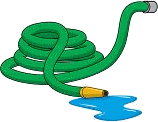
When a hose is pressurized, it moves. This can cause twist type fittings to separate. An easy way to prevent this is to pin the two sides of the fitting together using the lugs provided.
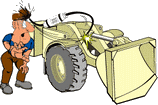
Fittings may also separate because they were not fully secured. If the hose diameter is greater than 1/2in it should have a safety device at the air supply, designed to reduce the pressure in the event of a hose failure. If such a device is not used, the two ends of the hose need to be lashed together to restrict whipping.

Use whipchecks to help prevent injuries or accidents resulting from hose or coupling failure. A whipcheck extends across the hose fittings to give standby safety for hose. Simply pull back the spring and slip the loops on the whipcheck over each hose before connection to provide security against hose whip.
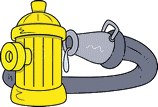
Pay attention to how the hose is being strung from the air source to the work area. Aboard ship it is common practice to secure the hose to the overhead to keep it out from underfoot where it could trip someone or get damaged. This practice can be extended to other types of work areas by using nearby structures or hose trees. If this is not possible, at least run the hose in an area where it is not likely to be walked on or driven over. For example, if a hose needs to be run down a passage, dress it close to the wall. Drape it over a doorway, not across the threshold.
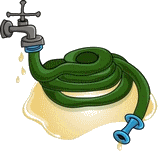
Avoid sharp bends. These can cut the hose and/or damage the reinforcement. If a hose gets caught on something, a good hard pull is not the answer. Go back and find out what it is caught on and release it there.
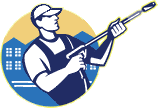
Do not shut off the air flow by bending the hose or crimping it with pliers. This is a sure way to cause major hose damage.
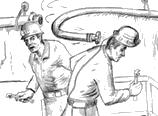
A whipping hose is very dangerous. Whipping can be limited by securing the hose to fixed objects at short intervals. This can be done with sandbags, clamps, rope etc.

If a line does break, never try to grab and restrain it. Get clear of the area and shut the flow off at the Reference(s).